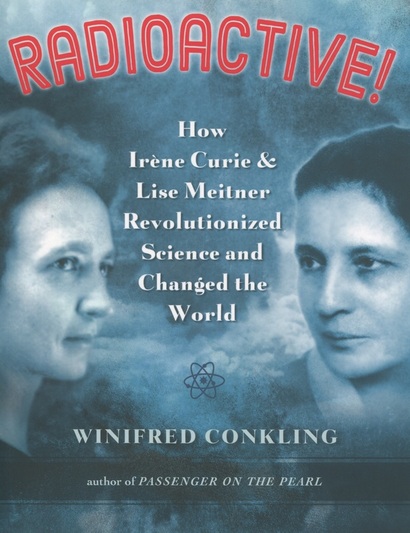|
Two Women Revolutionized Science and Changed the World. Irene Curie--not Marie Curie, the Nobel-Prize-winning scientist you've heard about, but her teenage daughter. The story takes one twist after another, and here to tell it is Winifred Conklin author of the new book Radioactive! Seventeen-year-old Irene Curie volunteered to serve in World War I as an x-ray technician. She used portable x-rays to help surgeons identify shrapnel and perform operations near the battlefield. Below Irene Curie on a mobile x-ray unit in 1916. Her mother had developed the military x-ray program. Marie wanted to win her mother’s respect, and, frankly, she wanted to spend some time with her mom. This combination of brilliant scientist and vulnerable teen made her an irresistible subject to me.  Lise Meitner in the laboratory (1913). Lise Meitner in the laboratory (1913). The Germans were using x-ray technology, too. Lise Meitner, an Austrian who had been working in Berlin when the war began, performed the same work as Irene. She was an x-ray technician on the German side of WWI. Both Curie and Meitner would prove to be among the most accomplished female scientists of the 20th century. These women were among a handful of physicists worldwide who were working on better understanding atomic structure.  Curie had been born into the “First Family of Science” (both of her parents had won Nobel Prizes), But Meitner had been turned away from higher education programs because she was a woman. She finally had a chance to study physics at the University of Vienna in 1901, but she repeatedly came up against obstacles. She was not paid in the early years of her research program, and she had to set up her own laboratory in the basement of the science building because she was not allowed to work in the main lab with the men. The chief scientist claimed he was afraid her hair would catch fire, even though she wore her hair in a tight bun and the men in the lab almost universally wore elaborate facial hair.  Otto Stern and Lise Meitner, possibly 1937 colloquy with Nobel Price winners Otto Stern and Lise Meitner, possibly 1937 colloquy with Nobel Price winners During their careers, both Irene and Lise made important discoveries in the understanding of physics. Curie and her husband, Frederic Joliot, discovered artificial radiation. They won a Nobel Prize in 1934 for their work. Lise had to flee Nazi Germany in 1938, leaving her laboratory and research behind. She continued to consult with her former lab partner, Otto Hahn, and she made the breakthrough in understanding of nuclear fission. Ultimately, Hahn took credit for her discovery and claimed the Nobel Prize for the work they did together. Lise Meitner and Otto Hahn in West Germany in 1962.  Bombing of Nagasaki, Japan Bombing of Nagasaki, Japan The women had seen such horrors on the battlefields during World War I that they had become pacifists; both were horrified that the work they did in the name of science had been used for the creation of the most destructive weapon in the history. “It is an unfortunate accident that this discovery (of fission) came about in a time of war,” Meitner said. I find these women inspiring not only because of their accomplishments, but also because of their humanity.  They were undeniably gifted scientists, but they also held fast to their love of peace. Curie dedicated her later years to working for nuclear disarmament; Meitner worked on the development of nuclear energy. Throughout their lives, they both envisioned a world where scientists could master the art of using the power of the atom not for a weapon but for the benefit of humankind. Winifred, thrilled to have you on the blog today, and to highlight your wonderful book. Thank you! Winifred Conkling is an award-winning author of fiction and nonfiction for young readers whose works include Passenger on the Pearl: The True Story of Emily Edmonson’s Flight from Slavery (Algonquin, 2015) and the middle-grade novel Sylvia and Aki, winner of the Jane Addams Children’s Literature Award and the Tomás Rivera Award. See more about Winifred's books here. Comments are closed.
|
I'm fascinated to discover little-known history, stories of people and events that provide a new perspective on why and how things happened, new voices that haven't been heard, insight into how the past brought us here today, and how it might guide us to a better future.
I also post here about my books and feature other authors and their books on compelling and important historical topics. Occasionally, I share what makes me happy, pictures of my garden, recipes I've made, events I've attended, people I've met. I'm always happy to hear from readers in the blog comments, by email or social media. Archives
September 2023
Categories
All
|

